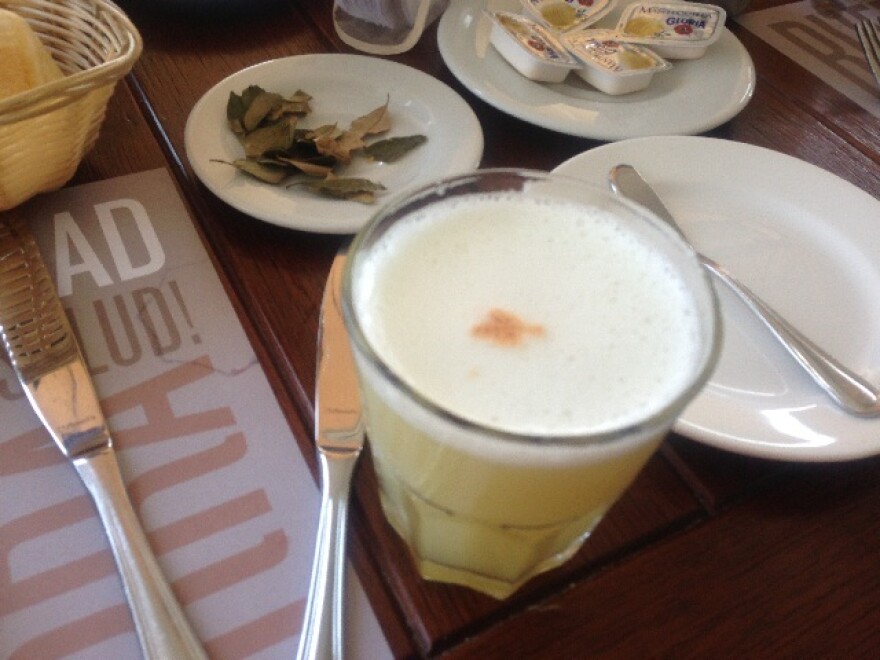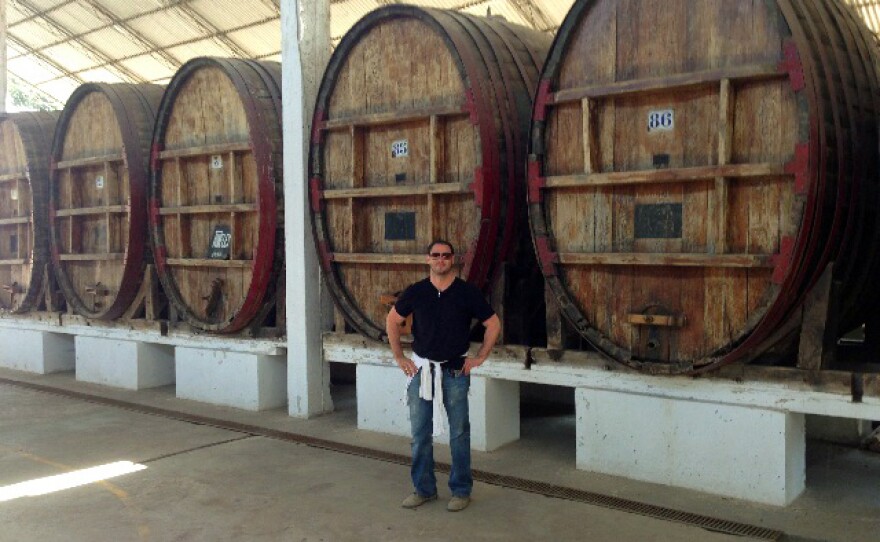In early April, Mandolinbar manager John Anton hopped on a plane to Lima to meet up with seven other bartenders from across the country. Each had won a national cocktail contest sponsored by Campo de Encanto, the makers of an ancient Peruvian liquor called pisco. The prize was a trip to Peru to learn how the spirit is distilled. When the group stepped off the plane, they were immediately greeted by the owner of the company and a bottle of pisco. It was 4:30 a.m.
Pisco is an old drink, made in Peru since the 1600’s. It’s distilled from grapes instead of grains, and it’s traditionally aged in clay containers that impart no color. The result is a smooth, clear spirit that some liken to grappa. Similar to wine, Anton claims “you can really taste where it came from,” due to the quality that the grapes impart.
The trip lasted eight days. During that time, John and his fellow bartenders consumed more pisco than they had ever imagined they could in an eight day span. (“I guarantee we drank cases,” Anton says.)
But they were also put to work. Their first day, they attended a lecture on pisco history at the University of Lima. The next, they drove six hours south to the actual town of Pisco, a lush oasis in an arid dessert region, where they were greeted by the other two company employees (there are three, total). A banner over the small town said “Welcome to Pisco.”
The day after, they were woken up at six to pick Moscatel grapes for a new batch of pisco. Between the eight of them, they picked two tons. And then they had to crush them with their feet.
“It was a lot of fun for some people,” Anton said, “But I’ll just say it wasn’t my favorite thing to do. It’s very sticky, very messy, and by then it was very hot, maybe mid-nineties. I crushed for 15 minutes. But there was a group that loved it. They crushed for two or three hours, and we nicknamed them the crush crew.”
Like whiskey in the United States, Pisco is served just about everywhere in Peru. Anton estimates that there are hundreds of brands throughout the country. And similar to certain wines and beers in Europe, pisco has to comply with a strict set of guidelines in order to bare that label. It has to be aged one year. It can’t have any additives, including sugar. It must be made from only certain varieties of grapes that grow in Peru or Chile.
"What I took most from that trip was not only knowledge, but a passion to make the drink properly."
Anton says that the bartender group got to go through each step of the pisco-making process, from harvesting the grapes through distillation. They stayed up until 2:00 a.m. some nights helping the Campo de Encantocrew in the distilling warehouse—marking barrels, tracking evaporation levels, tasting for quality control. Then they’d wake at 7:00 to begin their next task. The group also went to bars and tried different pisco cocktails, including many variations of the classic pisco sour, some with cocoa leaves and hot chilies.
“I got tutelage from every single bartender we went to,” Anton says. “What I took most from that trip was not only knowledge, but a passion to make the drink properly.”
Anton says that he’s excited about making it for his Raleigh customers. (He gave us the recipe, below.)
Rudyard Kipling once famously wrote, “[Pisco Punch is] compounded of the shavings of cherubs’ wings, the glory of a tropical dawn, the red clouds of sunset, and the fragments of lost epics by dead masters."
Maybe Kipling was trying to convey something that Anton said, in simpler terms: “It is just such beautiful, expressive product, a living product.”
To find out if that’s accurate or not, you might just have to try it yourself. Here is Mandolin’s recipe:

Pisco Sour
2 ¼ oz. Campo de Encanto pisco
¾ oz. gum syrup
¾ oz. lime juice (Anton recommends picking a small, bright lime)
1 ¼ oz. egg white
Angostura bitters
Put all ingredients except bitters in a shaker and shake them well dry (without ice). This makes the egg white froth. Add small handful of ice, and give it really good vigorous shake.
Double strain it into a glass. Add three drops of Angostura bitters to the top. It should look very light greenish, with a silky texture.




















